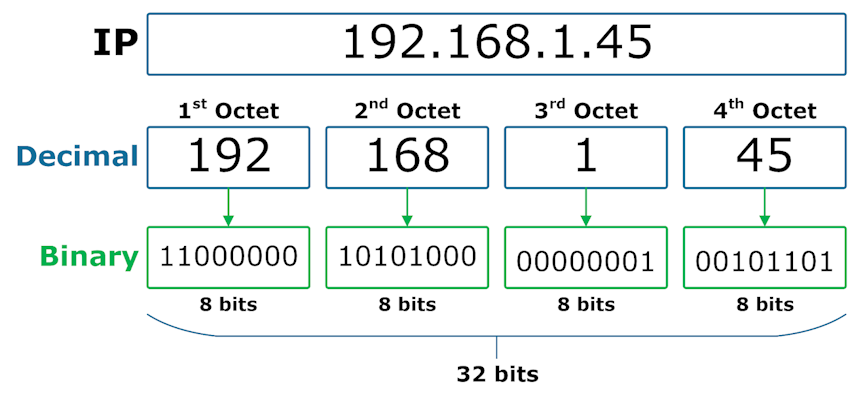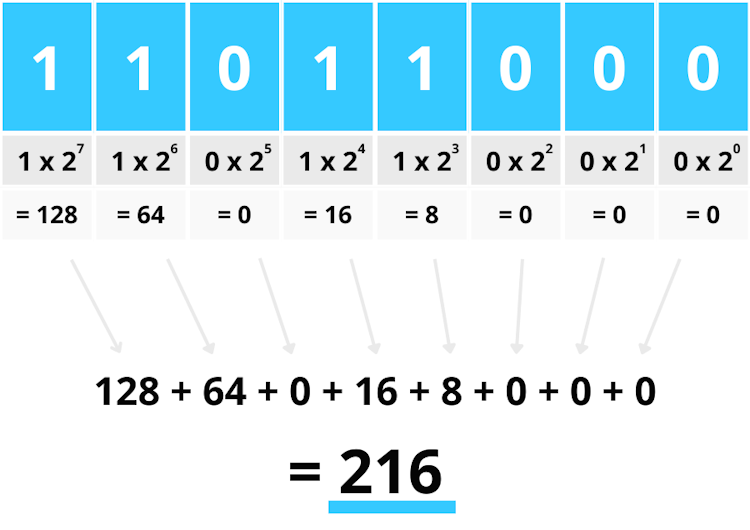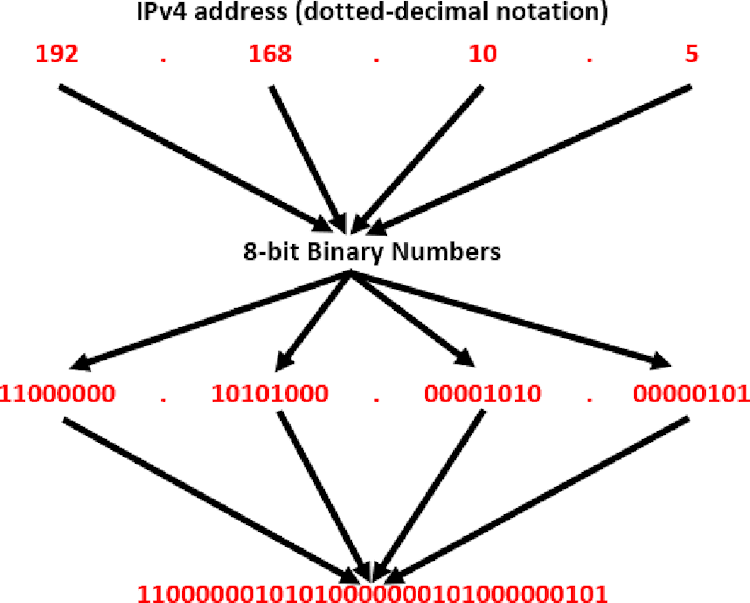Introduction
In the complex system of social networking, IP addresses and binary code are the essential building blocks that provide smooth interaction throughout the enormous digital space.
Computers can link up, communicate, and transmit data due to these vital components. This in-depth article will take us on a voyage through the complexities of internet protocol addresses and binary codes, revealing the secrets of their functioning and showing their immense importance in the ever-changing field of the internet.

What do IP Addresses Really Mean?
Every internet-connected device has an IP (Internet Protocol) address, which is a specific numerical name.
An IP address functions as a virtual identification that facilitates communication between computers connected to the internet. Consider it as the digital version of a residential address that directs data packets over the massive internet to their desired location.
192.168.1.1 is an example of an IP address, which usually consists of 4 sets of integers separated by dots. The numbers that make up each set indicate an octet (each group of 8 bits), and they can have values between 0 to 255. The secret of routing data traffic over the global web is contained in these number sequences.
The Two Faces of IP Addresses: IPv4 and IPv6
IP addresses appear in 2 unique versions in the networking world: IPv4 (Internet Protocol version 4) and IPv6 (Internet Protocol version 6). IPv4, the older version, has a 32-bit address system and can support over 4.3 billion distinct addresses. .
As the technical world saw how much more web addresses were needed, they introduced IPv6, which has a 128-bit address system and gives the internet a far bigger pool of unique addresses.
In the ever-growing universe of online interaction, this graceful development guarantees the peaceful interaction of these two IP address types.
IP Address Navigation: Controlling the Virtual Odyssey
IP Address management becomes an essential tenet in the constantly evolving World Wide Web, making sure that information travels smoothly in the virtual world.
Exact processing of IP Addresses is crucial in this complicated virtual maze, just like accurate address-giving is necessary while going through the roads of a town to get to the desired location.
An easy way to navigate IP addresses is to use IP Address Lookup applications, which are highly valuable while exploring the digital world. By carefully tracing the origin and location of an IP address, these technologies provide important information about linked machines or individuals, improving traveling in the complex world of the internet.
Understanding Binary Code: The Computer Language

Although Internet Protocol (IP) addresses offer a human-readable interaction structure, machines interpret Binary Code, which is considerably more fundamental. At its core, the Binary Code is a method of encoding words, commands for computer processors, and other types of data utilizing a Binary Number System, which has just 2 figures: 0 and 1.
The Architecture of Binary Numbers
Every digit in the Binary System referred to as a "bit," corresponds to a Binary value. Every bit in this format doubles in value as you proceed from right to left. The algorithm works on powers of 2. For instance, in the decimal format, 1 x 2^3 + 1 x 2^2 + 0 x 2^1 + 1 x 2^0 is represented by the Binary number 1101, which is equivalent to 13.
Machines process and transfer data using this Binary format as their basic language. Binary Code is the final format that all data—from words and photos to program instructions—is converted into so that a computer can comprehend and use it.
IP Addresses Encoded in Binary

The binary form of an IP address is hidden underneath the well-known dotted-decimal format. Each octet of an IP address must be disassembled into its Binary form in order to switch it to code. For example, the Binary conversion of the IP address 192.168.1.1 is 11000000.10101000.00000001.00000001.
Networking experts can diagnose and optimize network efficiency by having a better grasp of the Binary format of IP Addresses, which also sheds light on the workings of data transmission. It enables a better understanding of how devices interact in the syntax that machines can comprehend the most.
The Streamlined Collaboration: IP Addresses and Binary Code
Given the critical roles that both IP Addresses and Binary codes perform in computing systems, understanding the link between both of them is imperative.
IP Addresses function as virtual identifiers that let machines recognize and connect to one other. At the same time, the fundamental language that makes this interaction possible is Binary Code.
A procedure known as packetization occurs as data moves over the internet, with every packet holding a subset of the Binary-Encoded data. With the help of Internet Protocol (IP) addresses, such packets move throughout the entire network until they arrive at their location. After that, the interaction cycle is finished and the Binary Code is translated back into useful information.
Linking the Concepts: IP Addresses, Binary, Subnetting
We must look into the concept of subnetting in order to have greater comprehension. Partitioning a bigger network into more feasible, smaller subnetworks is known as subnetting. Efficiency, safety, and general network reliability are all improved by this technique.
Due to its effect on the distribution of IP Addresses throughout the network, subnetting is also related to Binary coding. The split of IP Addresses into subnets requires the manipulation of Binary bits, which is referred to as Subnet Mask computation. The best possible use of resources and network structure is guaranteed by this complex combination of Binary modification and IP addressing.
The Future Landscape: IPv6 and Beyond
An increasing number of IP Addresses will be needed as the online realm expands and the variety of linked machines keeps rising. Even though IPv4 has been useful to us, IPv6 adoption is necessary to meet the rising need for distinct identities.
The Internet of Things (IoT) and the networked world of the future are made possible by IPv6's enormous address space, which guarantees an infinite amount of IP Addresses. Not only is adopting IPv6 a technological advancement, but it is also essential to future-proof our online system.
Conclusion
IP Addresses and Binary Codes are cornerstones in the complex web of connectivity that allow data to flow freely throughout the internet. The base of computing is the mutually beneficial interaction between these two ideas, and anybody attempting to navigate the complex realm of networking must grasp their subtleties.


Comments (0)